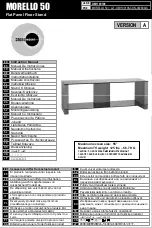
Safety Information
To ensure safety of public electromagnetic field exposure, abide by the following guiding
principles in BTS antenna site installation:
In rooftop installation, install antennas at a height over the height of personnel who may
work or live on the rooftop.
In rooftop installation, install transmit antennas far away from most visited areas, such as
the rooftop access point, telephony service point, and HVAC equipment.
In rooftop installation, install directional antennas peripherally and do not make them
face towards buildings.
Properly choose from large antennas (better signal coverage) and small antennas (less
visual impact).
Install antennas at a far site, although it may be mutually exclusive to local area
requirements.
When constructing a common installation site, pay special attention to antennas from
different manufacturers, especially high-power broadcasting (FM/TV) antennas.
Antennas are generally installed in one common site locally, which may increase safety
risks.
Take special preventive measures at antenna sites next to hospitals or schools.
Use of Other Wireless Equipment
If any related equipment manual specifies the safe distance of electromagnetic field
exposure, this distance requirement should be applied.
No application distance is specified for the equipment with low RF transmit power that
meets electromagnetic field exposure requirements.
No application distance is specified for the equipment with special design that meets
electromagnetic field exposure requirements in close use.
Use of High-voltage Equipment or Facility
Only the power frequency electromagnetic field generated by high-voltage (for example,
over 100 kV) equipment or facility are harmful to human. Therefore, the electromagnetic
field needs to be evaluated according to related requirements.
1.5
Mechanical Safety
Hoisting Safety
Do not walk under the crane arm or hoisted objects when heavy objects are being hoisted.
Hoisting operators must be trained and qualified before starting to work.
Hoisting tools must be check to ensure tool completeness.
Before hoisting, ensure that hoisting tools are securely fastened to fixed load-bearing
objects or wall.
During hoisting, ensure angles between lifting slings are not larger than 90°, as shown in
Figure 1-2.






































